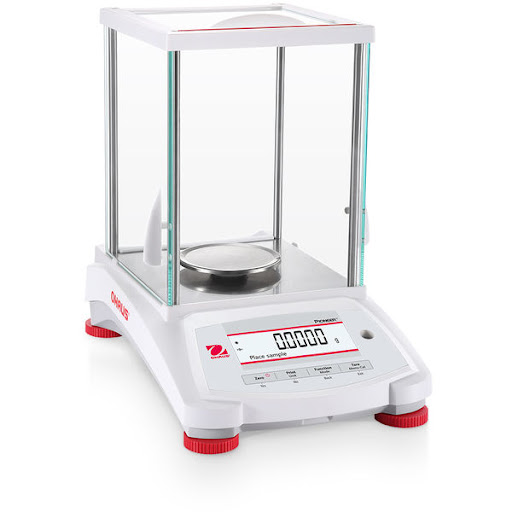Internal vs. External Calibration: Pros and Cons of Each
Posted by Maxi Scientific on Aug 29th 2024
When setting up a laboratory, selecting the appropriate analytical balance is crucial for ensuring accurate and reliable measurements. One key decision you'll need to make is whether to opt for a balance with internal calibration or external calibration. In this post, we'll explore the pros and cons of each approach to help you make an informed decision.
Internal Calibration
Internal calibration, also known as automatic or motorized calibration, involves a built-in calibration mechanism within the balance itself.
Pros:
- Convenience: Calibration can be performed quickly and easily at the push of a button, without the need for external weights.
- Time-saving: The automated process reduces the time required for calibration, increasing overall lab efficiency.
- Reduced human error: Minimizes the risk of errors associated with handling external weights.
- Consistent calibration: The internal mechanism ensures a standardized calibration process every time.
- Environmental adaptability: Many internally calibrated balances can automatically adjust to changes in temperature and other environmental factors.
Cons:
- Higher initial cost: Balances with internal calibration mechanisms are generally more expensive upfront.
- Limited flexibility: You're restricted to the internal calibration weight, which may not cover all ranges you need.
- Maintenance complexity: If the internal mechanism fails, repairs can be more complex and costly.
- Potential for unnoticed drift: Without regular checks using external weights, gradual drift in accuracy might go undetected.
External Calibration
External calibration requires the use of separate calibration weights that are manually placed on the balance pan.
Pros:
- Lower initial cost: Externally calibrated balances are typically less expensive to purchase.
- Flexibility: You can use various external weights to calibrate different parts of the balance's range.
- Transparency: The process is more hands-on, allowing users to see and understand the calibration process.
- Simpler mechanism: With fewer internal components, there's less that can potentially malfunction.
- Traceability: External weights can be independently certified and traced to national standards.
Cons:
- Time-consuming: The manual process of external calibration takes more time and effort.
- Risk of human error: Improper handling of weights can introduce errors in the calibration process.
- Requires additional equipment: You need to purchase and maintain a set of calibration weights.
- Environmental sensitivity: Users must be careful to account for environmental factors during the calibration process.
- Increased wear: Frequent handling of the balance and weights can lead to wear over time.
Making Your Decision
When choosing between internal and external calibration, consider the following factors:
- Budget: Both immediate and long-term costs
- Frequency of calibration: How often you'll need to calibrate the balance
- User expertise: The skill level of those who will be performing calibrations
- Regulatory requirements: Some industries may have specific calibration requirements
- Environmental stability: The conditions in which the balance will operate
Want a recommendation, or do you have any more questions? Contact either your Personal Concierge, or clientservices@maxisci.com!

